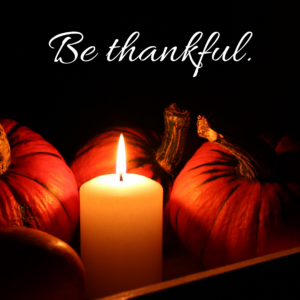
This Thanksgiving we are thankful we are not sleeping on the side of I-95 in near-freezing temperatures (and that’s a blog post for another day). And in honor of Thanksgiving, we’d like to take some time to talk a little about the real history of Thanksgiving that many of us never learned in school.
Content warning: this post contains descriptions of violence and racism. It is presented in a way that we hope will be educational, but understand not everyone is in a place where they can safely read this material. We also mean no offense and any errors, omissions, or misspoken words are due to our own ignorance and welcome corrections by Native, indigenous, and non-white readers. Thank you.
We recognize and respect that Thanksgiving has become a holiday where we celebrate the abundance and gratitude for the things we have in our lives. We’re certainly grateful and thankful for our nomadic life, with all its ups and downs, and for the ability to spend so much time together as a family. But as nomads who chose to be nomadic, we (and all RVers) have an obligation to learn more about the history of the lands we explore and occupy.
We could rephrase what many Native Americans have been saying about Thanksgiving for hundreds of years, or we could lift their voices and share their stories in their own words here.
From 8 Things The History Books Don’t Tell Us About Native People:
In 1621, Wampanoag Indians investigated gun and cannon fire at a Pilgrim settlement to see them celebrating a successful harvest. The Indians — all male warriors, were fed as a gesture of peace. The act was not repeated annually. In 1636, when a murdered man was discovered in a boat in Plymouth, English Major John Mason collected his soldiers and killed and burned down the wigwams of all the neighboring Pequot Indians who were blamed for the murder. The following day, Plymouth Governor William Bradford applauded the massacre of the 400 Indians, including the women and children. The Governor of the Massachusetts Bay Colony, William Newell, proclaimed: “From that day forth, shall be a day of celebration and thanks giving for subduing the Pequots.” For the next 100 years, every Thanksgiving Day ordained by a governor was in honor of the bloody victory, thanking God that the battle had been won.
From The real story of Thanksgiving, published by the Manataka American Indian Council:
The killings became more and more frenzied, with days of thanksgiving feasts being held after each successful massacre. George Washington finally suggested that only one day of Thanksgiving per year be set aside instead of celebrating each and every massacre. Later Abraham Lincoln decreed Thanksgiving Day to be a legal national holiday during the Civil War — on the same day he ordered troops to march against the starving Sioux in Minnesota
The first official “Thanksgiving” was actually Massachusetts Governor Bradford’s First Proclamation After Plymouth:
Inasmuch as the great Father has given us this year an abundant harvest of Indian corn, wheat, peas, beans, squashes, and garden vegetables, and has made the forests to abound with game and the sea with fish and clams, and inasmuch as He has protected us from the ravages of the savages, has spared us from pestilence and disease, has granted us freedom to worship God according to the dictates of our own conscience.
Source: AppleSeeds.org. It is important to note here that “savages” refers to Native Americans, a derogatory term written into the United States Constitution.
Here are some books you may be interested in reading or gifting this year, which tell us much more about the history of Thanksgiving:
- Squanto’s Journey: The Story of the First Thanksgiving, a children’s book by Joseph Bruchac
- 1621: A New Look at Thanksgiving (National Geographic), a children’s book by Catherine O’Neill Grace
- An Indigenous Peoples’ History of the United States (ReVisioning American History) by Roxanne Dunbar-Ortiz
- This Land Is Their Land: The Wampanoag Indians, Plymouth Colony, and the Troubled History of Thanksgiving by David J. Silverman
Today, as we sit on stolen Yemassee land in what is now known as southern Georgia, David and I learned that the Yemassee people were “one of the most documented historical tribes ever simply written out of history.” Due to their dark skin and features, European settlers erased the Yamasee by declaring them “Negroes,” and enslaved them alongside other people of color at this time, treating all slaves as the same, without unique cultures or identities. Yemassee people who escaped slavery in South Carolina and Georgia fled to the land now known as Florida, and they alongside other native people who moved to this region, became known as the Seminole, a word which means “refugee.”